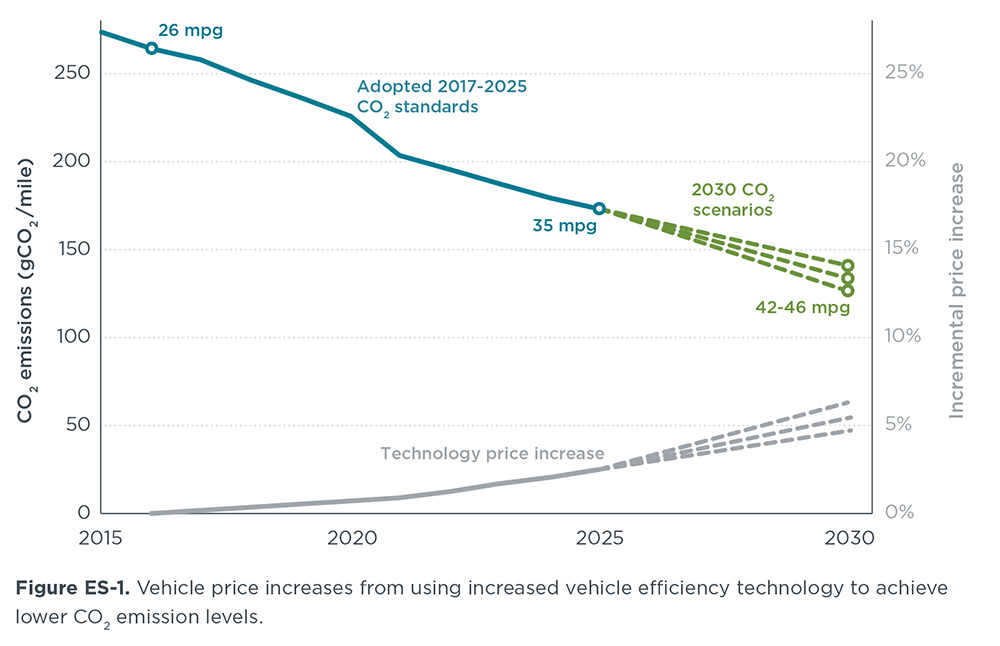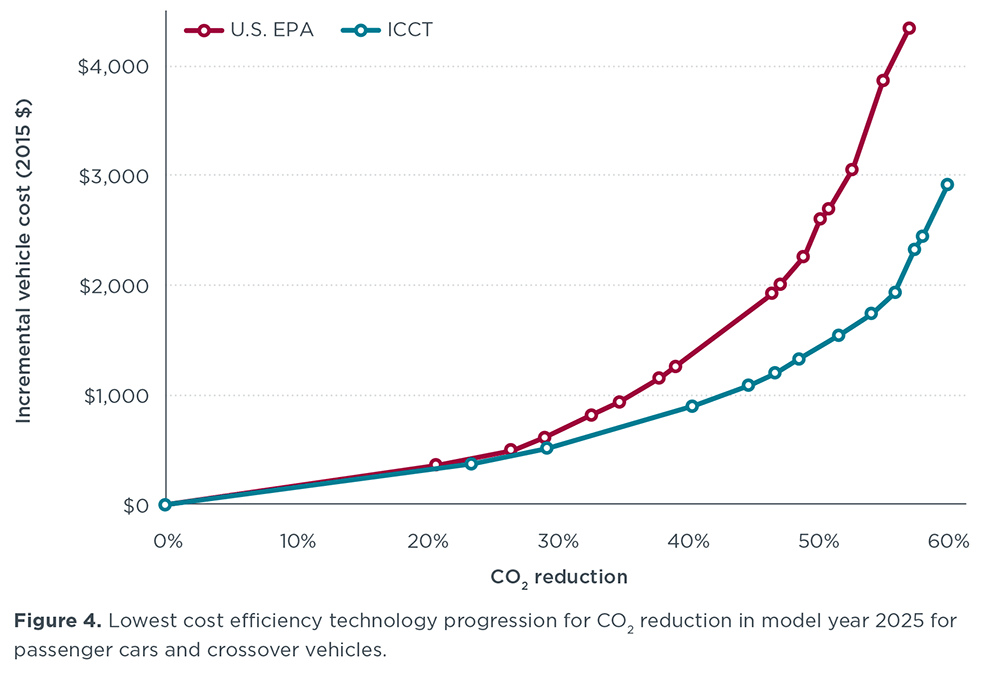Press release
[Press release] New ICCT study shows cost estimates for meeting MPG and pollution standards are overstated by as much as 40 percent
As federal efficiency and pollution standards for cars and light trucks are reopened, a new study finds that the cost of meeting those standards in 2025 is likely being overstated by as much as 40 percent in current debate. Based on current technology and cost trends, the paper finds even more stringent standards out to 2030 are feasible.
Released by the International Council on Clean Transportation (ICCT), the independent research group that helped expose the VW diesel emission scandal, this paper comes one week after the Trump administration announced the reconsideration of the Environmental Protection Agency’s (EPA) final determination, reopening standards for model years 2022-25 originally agreed upon by automakers, federal government, and California. On March 24th, the California Air Resources Board (CARB) will hold a meeting on its midterm review of the 2025 emission standards and consider its own next steps. This, in turn, will impact the car market of California and the 12 states that have California’s clean car rules, which together represent over a third of the U.S. new car market and almost 6 million annual car sales.
“Our research casts fresh doubt on automakers’ claims that the standards are too difficult and costly to meet,” said Nic Lutsey, ICCT program director and the lead author of the paper. “And we find that technology and cost trends make setting even more stringent targets out to 2030 not only feasible but desirable, because they would produce fuel cost savings to consumers two or even three times the technology costs per vehicle.”
ICCT’s paper builds on the modeling and peer-reviewed research underlying the Technical Assessment Report produced by the EPA and the National Highway Traffic Safety Administration (NHTSA) as part of a midterm review of the fuel-economy regulation. It incorporates subsequent industry research and new modeling of advanced vehicle technologies such as cylinder deactivation, high-compression Atkinson-cycle engines, cooled exhaust gas recirculation and other technologies. On that expanded evidence base, it updates the EPA’s and NHTSA’s technology and cost assessments for 2025, and projects those cost and innovation trends out to 2030.
Summary of findings:
- Previous costs of compliance have been greatly overestimated. State-of-the-art engineering studies and emerging supplier technology developments indicate that costs will drop by thousands of dollars per vehicle by 2025. As such, compliance costs for 2025 standards will be 34%–40% lower than projected by the EPA.
- Conventional vehicles could dominate in the near term. Emerging combustion vehicle efficiency will result in cost-effective 8%–10% mileage improvements for vehicles by 2025, compared to the EPA’s analysis.
- Progress can continue at the same rate out to 2030. Federal standards that get progressively more stringent, at 4%–6% lower fuel use per mile annually from 2025 to 2030, can be achieved cost-effectively. Such standards would result in modest, gradual vehicle price increases through 2030, and with two to three times greater consumer fuel savings than costs. Such 2030 standards could be achieved mostly with advanced combustion technology, while also initiating the wider launch of plug-in electric vehicles to 13%–23% of the new vehicle fleet. Such standards would shift the new vehicle fleet from 26 miles per gallon in 2016 up to 42–46 miles per gallon by 2030.
“This analysis affirms just how reasonable the 2025 standards are,” said Lutsey. “The bottom line for consumers is that this technology literally pays for itself — with thousands of dollars of fuel savings per vehicle, even if gas prices stay low. Incrementally pushing the standards further through 2030 is eminently feasible from a technology and manufacturing cost point of view. If the U.S. wants to be a global leader, and remain a stable market for vehicle technology investments here, they will stick with the standards. Our research certainly shows what is possible if we stick with a steady progression toward more advanced fuel-efficiency technologies.”
Efficiency technology and cost assessment for U.S. 2025–2030 light-duty vehicles (pdf download)
Contact: Nic Lutsey, program director, nic@theicct.org, 415-202-5743
Download this news release (PDF)


